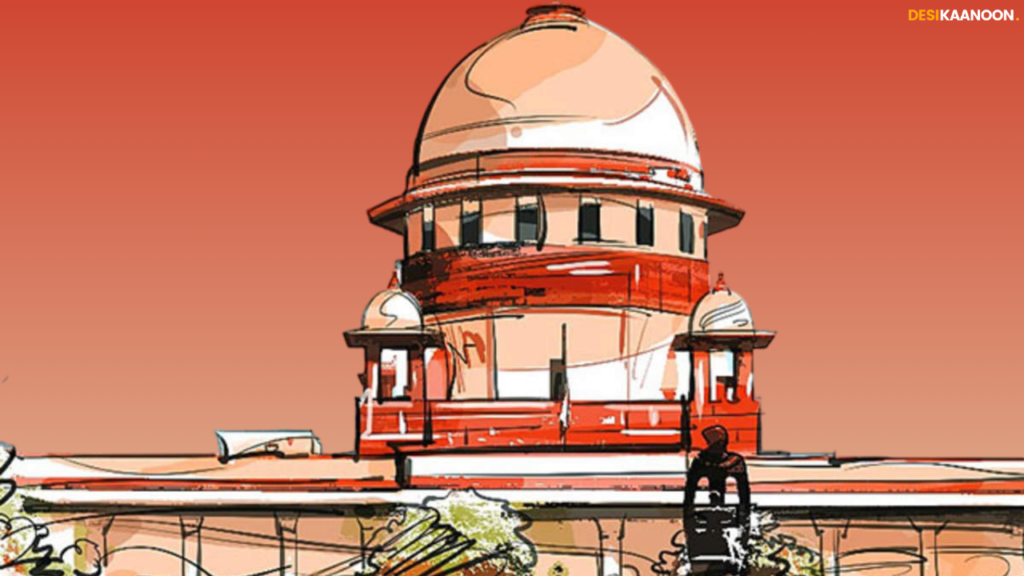Aastha Pareek
In the recent landmark ruling in Neeta Singh & Others v. State of Uttar Pradesh, the Supreme Court of India reasserted the role of the Chief Justice in determining the jurisdiction and case assignments within High Courts. This decision, delivered by Justices Dipankar Datta and Prashant Kumar Mishra, reinforces the foundational principle that High Court judges must comply with the jurisdictional allocation made by the Chief Justice. This ruling is intended to ensure procedural discipline, reduce inconsistencies in judicial administration, and reaffirm the Chief Justice’s role as the “master of the roster.”
The matter originated as a Criminal Miscellaneous Writ Petition (No. 8432 of 2023) filed under Article 226 of the Indian Constitution before the Allahabad High Court. The petitioners, led by Neeta Singh, challenged an FIR lodged against them under Sections 406, 504, and 506 of the Indian Penal Code, asserting it was filed out of malice and vengeance rather than genuine legal grounds. However, the High Court dismissed the petition on August 23, 2024, rendering it “infructuous” due to a charge-sheet filed by the investigating agency and subsequent cognizance taken by the competent criminal court. The petitioners then escalated the matter to the Supreme Court, raising concerns over the High Court’s refusal to entertain their writ petition.
The Supreme Court, through an order dated October 15, 2024, dismissed the Special Leave Petition (Crl.) No. 13578 of 2024 filed by Neeta Singh and others. The Court’s order underscored that High Court judges must adhere strictly to the case assignments made by the Chief Justice. Justice Dipankar Datta emphasized that any deviation from the Chief Justice’s roster could lead to procedural disarray, undermining judicial efficiency and respect for hierarchical order.
Justice Datta noted, “The Chief Justice holds the administrative control of the High Court. On the judicial side, however, he is only the first among equals.” The judgment elaborates on the Chief Justice’s exclusive authority to constitute benches and assign cases, highlighting that no judge may alter this assignment at their discretion.
Key Takeaways from the Judgment
The Supreme Court’s ruling reaffirms several critical principles:
1. Chief Justice as Master of the Roster: The Chief Justice alone has the prerogative to allocate cases among the High Court judges. Judges must adhere to these assignments and may not take cases beyond their designated jurisdiction.
2. Limits on Judicial Discretion: The ruling highlights that High Court judges are bound by the structural hierarchy, and must respect the Chief Justice’s directives. This limits judges from arbitrarily assuming cases or modifying jurisdiction without proper assignment, thereby maintaining a unified and orderly approach to judicial administration.
3. Applicability of Article 226 vs. Article 227: The judgment clarifies that while Article 226 provides writ jurisdiction, Article 227 allows supervisory jurisdiction over subordinate courts. The distinction is essential because judicial orders, particularly from criminal courts, cannot be challenged via Article 226 petitions, thus upholding the specific jurisdictional boundaries outlined in the Constitution.
The Supreme Court’s decision is expected to have profound implications for judicial administration across Indian High Courts. By reiterating the Chief Justice’s role as the central authority in roster management, the ruling curtails the potential for jurisdictional conflicts among judges and ensures a streamlined approach in case management. This decision also serves as a reminder to lower courts, reinforcing the significance of judicial discipline and respect for hierarchical processes.
Click here to access the order.

